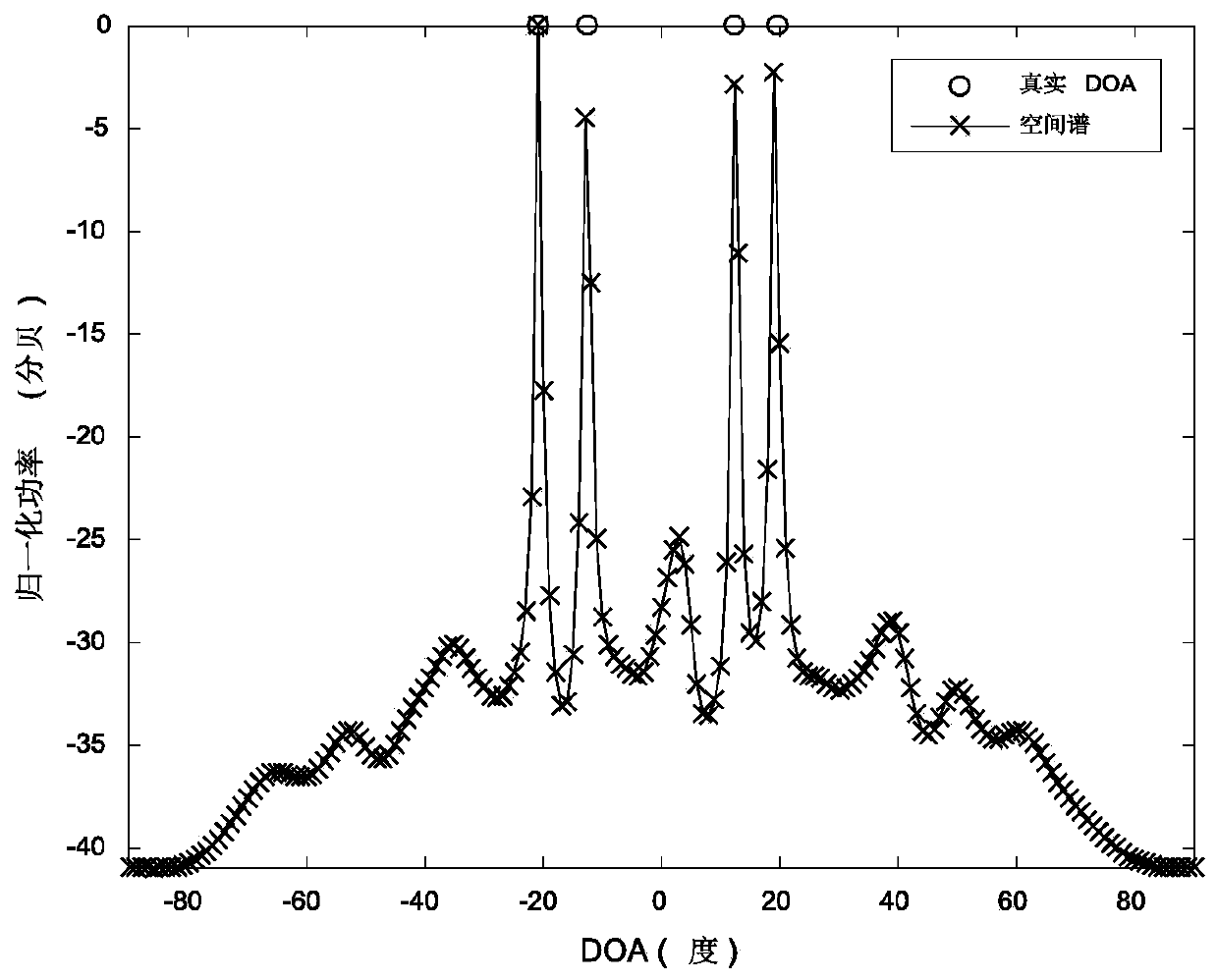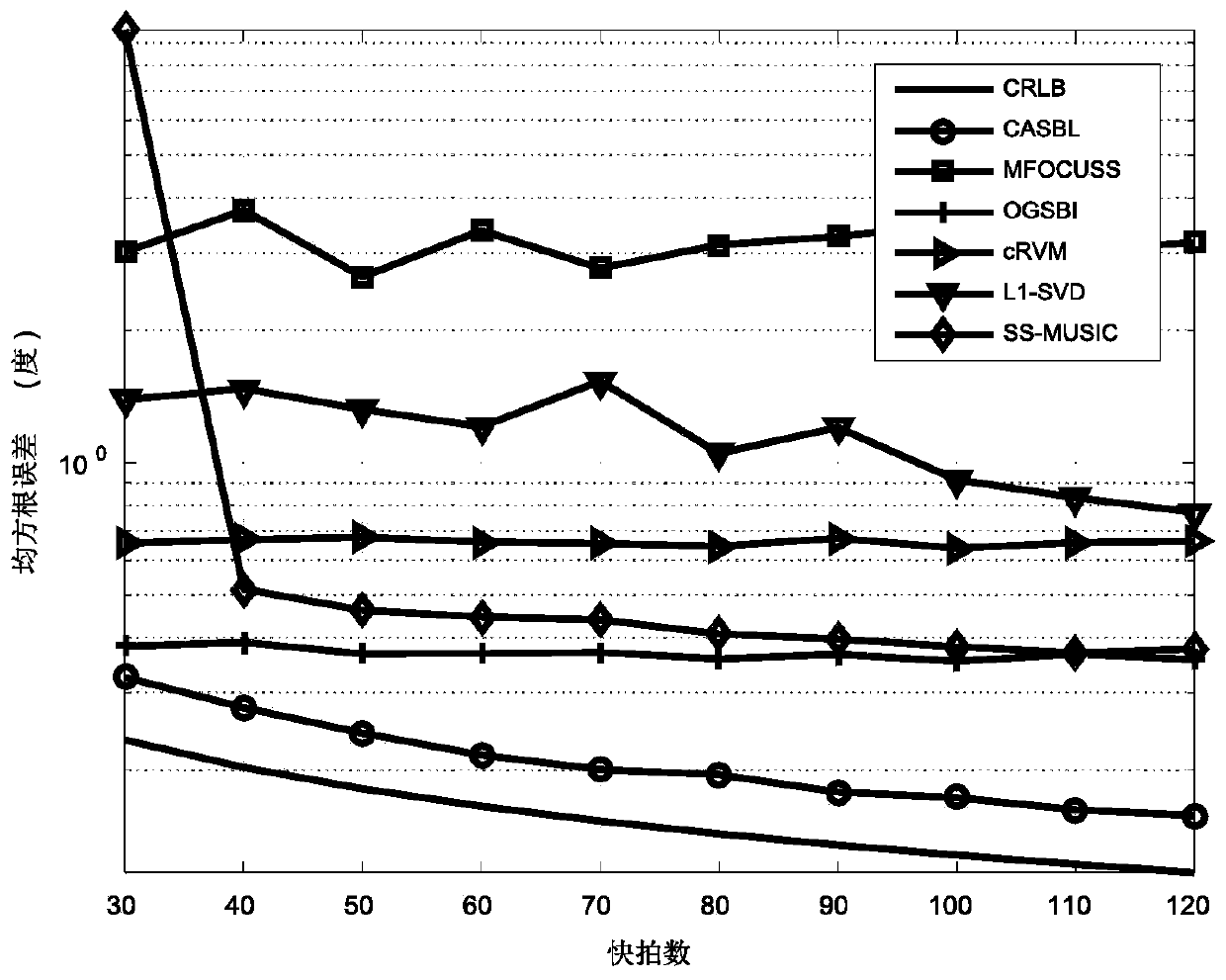Coherent signal DOA (Direction-of-Arrival) estimation method based on sparse Bayesian learning
A sparse Bayesian, coherent signal technology, applied in the field of coherent signal DOA estimation
- Summary
- Abstract
- Description
- Claims
- Application Information
AI Technical Summary
Problems solved by technology
Method used
Image
Examples
Embodiment Construction
[0084] The present invention will be further described below in conjunction with the accompanying drawings and embodiments.
[0085] The steps of the present invention are:
[0086] Step 1: Obtain the output signal Y of the receiving array;
[0087] It is set to use M omnidirectional sensors to form a receiving array, and it is assumed that there are N far-field narrowband coherent signals in the space, respectively at the angle θ n Incident to the receiving array, where n=1,2,...,N, the receiving array is used to receive and sample the incident signal, and the output signal of the array is:
[0088] Y=[y(1),y(2),...y(L)] (1)
[0089] Wherein, y(t)(t=1,...,L) represents the output signal of the array at time t, and L represents the number of snapshots;
[0090] Step 2: Grid the observation space and construct an overcomplete array manifold A;
[0091] Divide the observation space angle evenly with an angle interval of 1° in the range [-90°,90°], and obtain the angle grid p...
PUM
 Login to View More
Login to View More Abstract
Description
Claims
Application Information
 Login to View More
Login to View More - R&D
- Intellectual Property
- Life Sciences
- Materials
- Tech Scout
- Unparalleled Data Quality
- Higher Quality Content
- 60% Fewer Hallucinations
Browse by: Latest US Patents, China's latest patents, Technical Efficacy Thesaurus, Application Domain, Technology Topic, Popular Technical Reports.
© 2025 PatSnap. All rights reserved.Legal|Privacy policy|Modern Slavery Act Transparency Statement|Sitemap|About US| Contact US: help@patsnap.com



